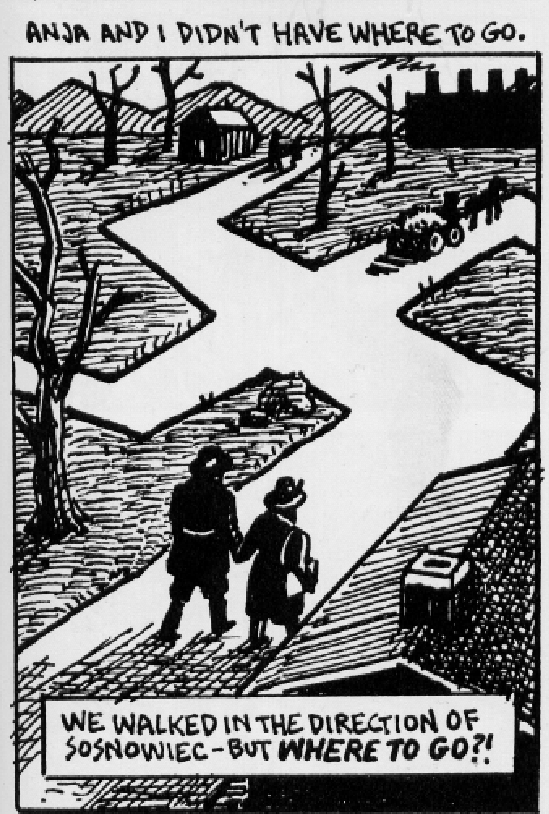Analog Project 5: Graphic Analysis of Maus
with Extra Credit Digital Option

Maus is full of dramatic irony, when what we as the readers comprehend is different from what the characters see and understand in their limited moment. In attempting to document the tensions between family members over generations and attempting to record and transmit Vladek Spiegelman’s experience of the Nazi holocaust in Poland and Germany and its after effects in New York, Art Spiegelman makes every chapter juxtapose the past of Vladek’s narrations with disturbances and distress at the moment of recording. Sometimes the narrative shows the author in the process of writing, showing us that this comic is not just about one storyline, but about World War II, the 1960s, and the 1980s bound and interconnected together.
This assignment involves identifying a pattern in the way Maus layers or juxtaposes Art’s and Vladek’s points of view. Explore two or three of the following options to develop into a graphic analysis, working closely with panels and page layouts.
- How do the drawings show us more than we could pick up from the words being spoken by the characters?
- How do sudden interruptions from one time frame intrude on another? Do these interruptions help signal or show us something more than the direct narration?
- How do sudden departures from the dominant style of the drawings (as for example, the presence of a real photo, or the Prisoner from the Hell Planet sequence) affect our reading and view of the characters?
- How do chapters organize layers of time? How does time layering become more complicated in Maus II?
- How does narrative make us aware of loss and unavailability of evidence about the past? In telling Vladek’s story, have we lost Anja’s?
Develop a 4 to 5 page (double-spaced) essay that works closely with a representative selection of chapters, pages, and panels in Maus I and II that help you to explore its ironic dimensions and juxtapositioning of time. Refer to panels specifically by counting them in the sequence with which you read them. So, for example, the panel illustrated at the top of this assignment page from Maus Book I page 125 panel 5, should be cited like this (Maus I: 125, panel 5).
Upload your paper on the Assignments tab in Courseweb by the due date, Monday 4/22 by 11:59pm.
Extra Credit Digital Option:
Add a digital component to this project by creating a TimeMapper for Maus I and II. Provide links on your essay for Project 5, pointing to your Google Sheet and your TimeMapper, as you did for Digital Project 1. If this Digital Project is an improvement on an earlier digital project, your score on this will replace your lowest digital project score. If it is not an improvement, it will not be counted.
For full credit, your TimeMapper must accurately and thoughtfully plot 10 events from Maus I and 10 events from or related to Maus II. Your TimeMapper entries should provide additional context on specific events in the books, or on relevant events connected to the book (you may include 2 or 3 of these as part of your 10 entries per book). The entries should provide links and images or multimedia to be available as a contextual resource to accompany Maus.
Details
- If pursuing this option, create a Google Sheet (following your method in Digital Project 1), and share edit access with me (ebbondar at gmail.com) if you want me to be able to help debug problems with your sheet.
- For TimeMapper to read from you sheet, you will need to do the following:
- Publish your Google Sheet to the web, with File -> Publish to web
- Click the green Share button on the top right of the screen, and share with “Anyone with the link”
- Visualize it using TimeMapper following the template intructions there. Copy the link to your published TimeMapper to include on your essay for Analog Project 5.
- Write a heading to your paper on the top left corner of page 1, but not appearing on later pages, giving the following information:
- Your Name
- This class: Englit 0066
- Your TimeMapper Link:
- Your Google Sheets Link:
- Date of Submission